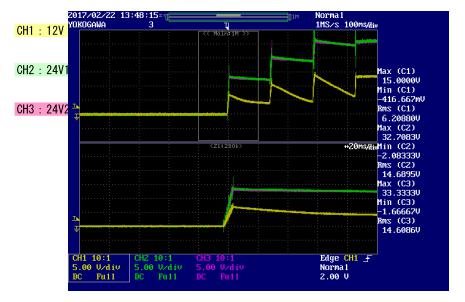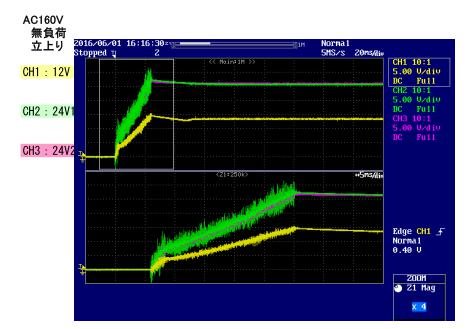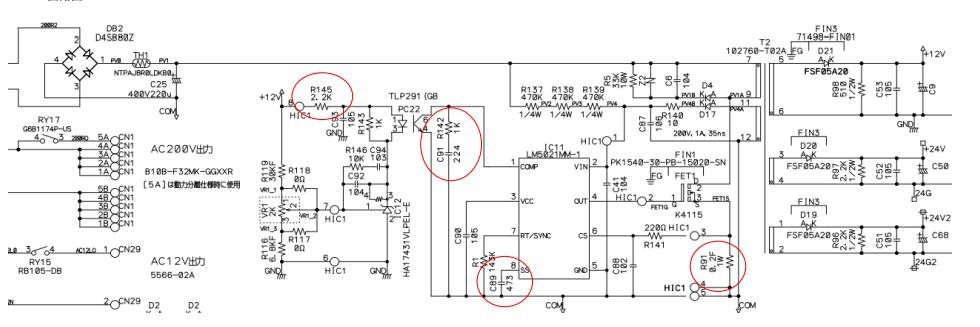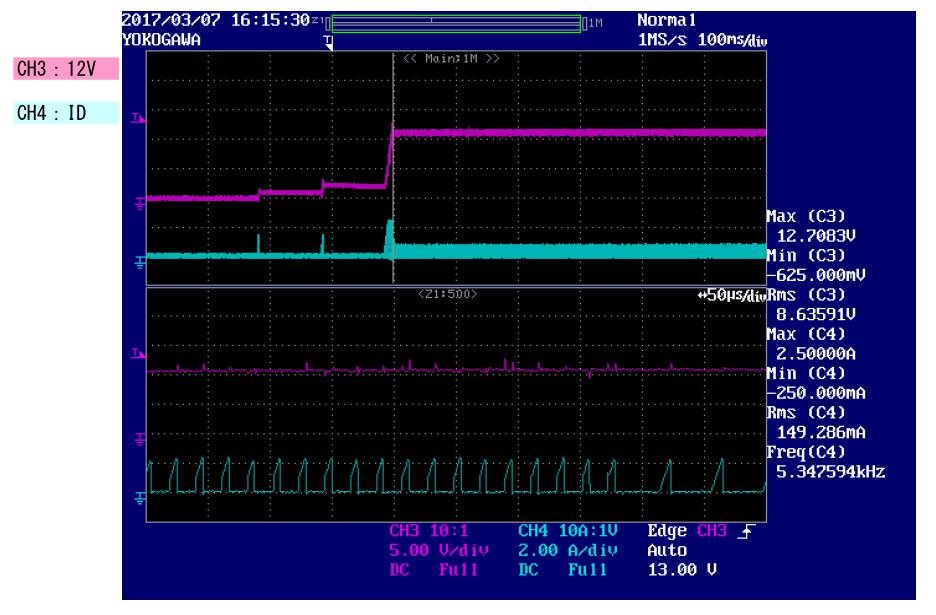Hi,
My customer is evaluating the LM5021 schematic.
Start up is not smooth as follows.
Then Rsense is 0.2Ω, This behavior doesn't happen when the Rsense is 0.1Ω as follows.
Both waveforms are output voltage.
What is the cause of this behavior?
I also attach the schematic.
Please let me know if you have any question.
Best Regards,
Kuramochi





